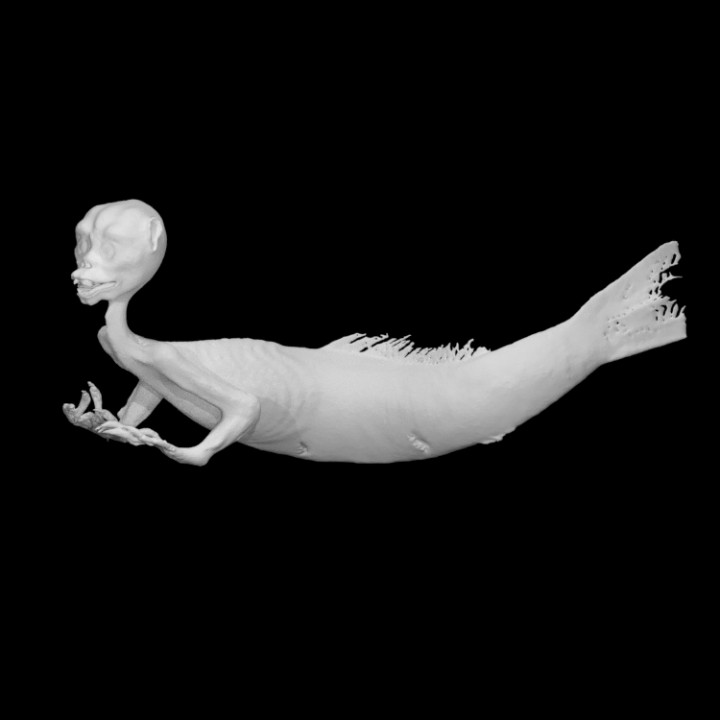
Merman
myminifactory
Human: The Shinto shrines in Japan have a long tradition of featuring this style of Mermaid, with reports dating back over a thousand years. During Japan's period of seclusion in the late 18th and early 19th Centuries, these Mermaids remained relatively unknown in the West, except to the Dutch who had a special trading relationship with Japan. In the 1840s, master showman P.T. Barnum brought a famous example called the 'Feejee Mermaid' to America and England, sparking a growing interest in this type of Mermaid in the West. As trade links between Japan and the West increased in the later part of the 19th Century, these Mermaids became increasingly sought after as collectible curiosities. The Horniman Merman was acquired by the Wellcome Collection in 1982. Purchased by Henry Wellcome on September 2nd, 1919 at a Stevens London auction, it was originally listed as "A Collection of Native Weapons, Carvings etc." from an Officer's estate. Initially described as "Japan, Mermaid, paper-mache body, with fish-tail 20 in. long x 9 in. high", the Merman later gained the name 'Japanese monkey-fish' due to its perceived monkey-like head. Recent analysis of the teeth, X-rays and CT scans suggests that it is primarily constructed from papier-mâché and parts of fish. DNA testing is currently underway to identify the species used, which may confirm whether the specimen was indeed made in Japan.
With this file you will be able to print Merman with your 3D printer. Click on the button and save the file on your computer to work, edit or customize your design. You can also find more 3D designs for printers on Merman.
